The regulatory landscape is complex and ever-changing. But while regulatory compliance is mandatory for organizations, is compliance enough to deal with the cyber threat landscape? There is a shift towards a risk-based approach to deal with cyber risks without relying only on compliance checklists.
While compliance and maturity levels are still relevant, the risk-based approach might be better suited to current times. So, even as organizations bend over backwards trying to achieve compliance and the required security maturity level, are compliance checklists a thing of the past? Let’s find out.
Risk-Based Approach vs. Compliance Checklist
The basics, first. What’s the core difference between a risk-based approach and a compliance checklist?
A risk-based approach is a method of identifying, assessing, and prioritizing risks to mitigate or manage them effectively. This approach involves considering the likelihood and impact of potential risks and taking proactive measures to minimize or eliminate those risks.
A compliance checklist, on the other hand, is a list of specific requirements or standards that an organization must meet to comply with regulations or laws. A compliance checklist typically outlines specific actions that need to be taken in order to comply with the relevant regulations or laws, and it is typically used to ensure that an organization is meeting all of its regulatory obligations.
While both approaches are important in different contexts, a risk-based approach is generally considered to be more flexible and proactive, as it allows an organization to identify and address potential risks before they become issues. A compliance checklist, on the other hand, is more prescriptive and focused on ensuring that an organization is meeting specific requirements or standards.
Key Steps of a Risk-Based Approach to Security
The key steps of a risk-based approach to managing cyber risk include:
- Identifying risks: This involves identifying the potential risks that could affect an organization, including financial, operational, legal, and reputational risks.
- Assessing risks: This involves evaluating the likelihood and impact of identified risks, prioritizing them and determining the appropriate level of response.
- Managing risks: This involves taking proactive measures to minimize or eliminate identified risks, or to reduce their impact if they do occur. This could include implementing controls or procedures to mitigate risks, transferring risks through insurance or other means, or accepting the risks if they are deemed acceptable.
- Monitoring and reviewing risks: These involve regularly reviewing and monitoring the effectiveness of risk management measures and updating them as needed to ensure that they are still effective in mitigating identified risks.
- Communicating and reporting on risks: This involves regularly communicating and reporting on risks to relevant stakeholders, including management, board members, and regulators, to ensure that they are aware of the organization’s risk profile and risk management efforts.
Adopting a Risk-Based Approach
To effectively mitigate cyber risk for an enterprise, leaders need to identify and prioritize the various components of cyber risk. This involves understanding the different elements of cyber risk and focusing efforts on the most critical ones. While the process of evaluating and addressing cyber risk can be complex, there are established best practices for achieving a strong cybersecurity posture. By following these best practices, leaders can effectively reduce the risk of cyber threats to their enterprise.
Cyber risk should be included in the overall risk management strategy.
One mistake that organizations often make is separating their cybersecurity risk management from their overall risk management efforts. This happens when cybersecurity is treated as a standalone IT project or the responsibility of the technology department.
However, with data being shared across organizations, cybersecurity cannot be isolated from the rest of the business. It should be integrated into the organization’s overall risk management strategy.
While many organizations try to raise awareness about cybersecurity risks through training programs and other initiatives, these efforts may not be effective in the long term. Instead of just focusing on increasing awareness, organizations should strive to change employee behavior and make cybersecurity a part of their everyday operations. Collaborative workshops and simulated emergency drills that emphasize relevant and specific risks are a good idea.
By treating cybersecurity as a normal part of risk management, rather than a mysterious or separate concern, organizations can effectively embed it into their overall risk management protocols.
Risk assessment should be aligned with other critical processes.
Every business has certain processes that are more valuable or critical to its operations than others. To identify and prioritize the most valuable and risky processes in your organization, your cybersecurity team should regularly engage with business executives to understand which processes are most important and how vulnerable they are to attack.
By creating an enterprise risk map that outlines the value and risk level of each process, you can better understand which assets or processes require the most attention in terms of threat detection and mitigation.
It’s also essential to map the dependencies of these processes, including any teams or third parties that are connected to them, to identify and address vulnerabilities in all the constituent parts of these high-value assets. By creating a risk priority list, you can prioritize the threats that pose the greatest risk and require the most immediate response.
Identify the vulnerabilities in each asset.
After creating a list of your organization’s most valuable and risky assets, the next step is to identify the vulnerabilities of each asset in detail. This includes exploring the known vulnerabilities of every system that is involved in the process.
You need to consider not just the technical vulnerabilities of your assets, but also the business processes that they are a part of. This can help you identify threats that may not be immediately apparent based on a technical vulnerability scan alone. By combining your risk-based asset list with a vulnerability map, you can design effective security controls and processes that address the most significant risks to your organization.
Adopting a philosophy of continuous monitoring of your threat landscape, rather than relying on one-off tests alone is a good approach. By combining regular testing with ongoing monitoring, you can create a robust security framework that helps reduce your risk of attack.
Finally, be sure to communicate security concerns and processes in an easily understood and accessible way, to ensure that all stakeholders are aware of and understand their role in keeping the organization secure.
Track the right metrics.
Many organizations track KPIs (key performance indicators) that measure the progress or completeness of a project. However, when it comes to managing risk, it’s more important to focus on reducing the level of risk rather than simply measuring progress. To do this, consider linking your KPIs to key risk indicators (KRIs) that specifically measure risk.
To effectively manage risk, it’s important to focus on metrics that directly measure risk, rather than simply tracking completeness or coverage. By doing this, you can better understand the enterprise-level risks faced by your organization and take appropriate action to mitigate them.
Understand vulnerabilities across the business.
To identify vulnerabilities within an organization, it is necessary to examine all aspects of the infrastructure, including applications, culture, and configuration. These vulnerabilities may be connected to a valuable asset or source and can be directly or indirectly related to it. Businesses need to identify the people, actions, technology, and third-party components involved in critical processes to assess vulnerabilities thoroughly.
The presence of controls can neutralize vulnerabilities, while the absence of controls allows vulnerabilities to persist. Using a common framework and language, security, risk, IT, and frontline teams can work together to identify and address vulnerabilities and improve overall security.
Related article: How to Optimize Risk-Based Cybersecurity.
Risk assessment is an important aspect of managing risks for a business. It involves identifying the most valuable and risky processes within an organization, mapping out their dependencies and vulnerabilities, and implementing security measures to mitigate these risks. By adopting a philosophy of continuous monitoring and regular testing, businesses can create a robust security framework that helps reduce their risk of attack.







